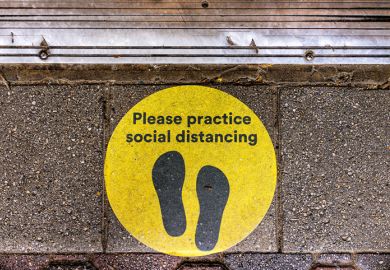When college students get onto campus this autumn, they will behave as 18-24-year-olds are accustomed to. They will gather in groups – to study, to socialise and, in the case of older students, to renew acquaintances that were abruptly broken off when Covid-19 hit in March 2020, forcing campus evacuations and the completion of the semester remotely.
Indeed, students may be even more gregarious than usual this year given that many have waited so long to return to campus, hoping for some semblance of normalcy. The fact that such intense socialising is in direct conflict with what is required to keep campuses open will not prevent it.
More than six million Covid-19 infections and almost 190,000 deaths in the US have squelched any hope of a normal campus life, even if the 18-24-year-old age group has been spared the worst of these outcomes. But colleges are placing a heavy emotional weight on students, and expecting them to adapt instantly to a radically different education environment is naive. Blaming them for their behaviour would be like chastising a novice tennis player for not playing like a professional.
Of course, colleges must beware of patronising students as incapable of adapting to new campus health requirements, and for colleges to remain open, students must embrace the new requirements being asked of them. But embracing students as part of the campus reopening team is the strategy that is most likely to minimise the need to go back to remote education.
To this end, colleges should follow four guiding principles.
First, they should stop punishing students for failing to observe social-distancing requirements. Understand that “non-adherent behaviour” for students during the pandemic is typically just normal college student behaviour. Asking students to wear face coverings, physically distance, wash their hands often and get tested frequently is uncharted territory for everyone. Acknowledge that the first month back on campus is a transition period. Communicating this broadly and informing all levels of administration on what is realistic to expect is necessary each passing week of the semester.
Second, build deep and meaningful bridges with student leadership to educate and inform them about what is needed and to engage them in policy decision making, and allow students to watch over themselves. These student leaders should include representatives from student government and organisations. In the US context, fraternities, sororities and highly visible student athletes can also be partners in the new normal, assisting in communicating key messages targeting the various student cohorts (freshmen, sophomores, juniors, seniors, graduate students, professional students).
This directed messaging will resonate well with the student population, facilitating both a rapid ramp-up to adherence and the ongoing maintenance of that adherence. Admonishments will ring louder coming from student leaders and will be more effective than punishments to clusters of non-adherent students from university administrators.
Third, temper expectations so that they are in line with what is reasonable. Expecting 100 per cent compliance with hygiene measures is unrealistic, but keep in mind that the goal is to keep the basic reproduction number – the average number of people each person with Covid-19 infects – below one, so that we avoid unbounded infection across campus and into the local community. An 80 per cent adherence rate can achieve this outcome.
Conduct observational surveys on campus to estimate this adherence rate and provide updates on the results from such surveys multiple times per week, alongside the accompanying risks and benefits. Communication of both good and bad outcomes shines a bright light on the health status of the campus, helping students connect their behaviour to the well-being of their fellow students, professors and professional staff.
Fourth, adhere to established best practice for public health: follow local and national guidelines. Requiring students to isolate longer than public health officials recommend creates an antagonistic relationship between students and colleges, which is a no-win situation. Believing that more stringent health requirements will make the campus and the community safer is wrong and will backfire. Students will sidestep the university system, creating unintended consequences that are detrimental to students, campus and the health of all.
The autumn semester will be a learning process for every campus holding some type of in-person education. The how-to guide for in-person education is being written in real time, but embracing students as true partners in the reopening process will surely result in safer campuses and communities, giving each college a legitimate chance to remain open.
The heavy-handed stick of punishment will not win many battles and most definitely will lose the war.
Sheldon H. Jacobson is a founder professor in computer science and Janet A. Jokela is the acting regional dean of the College of Medicine at the University of Illinois at Urbana-Champaign.
Register to continue
Why register?
- Registration is free and only takes a moment
- Once registered, you can read 3 articles a month
- Sign up for our newsletter
Subscribe
Or subscribe for unlimited access to:
- Unlimited access to news, views, insights & reviews
- Digital editions
- Digital access to THE’s university and college rankings analysis
Already registered or a current subscriber?








